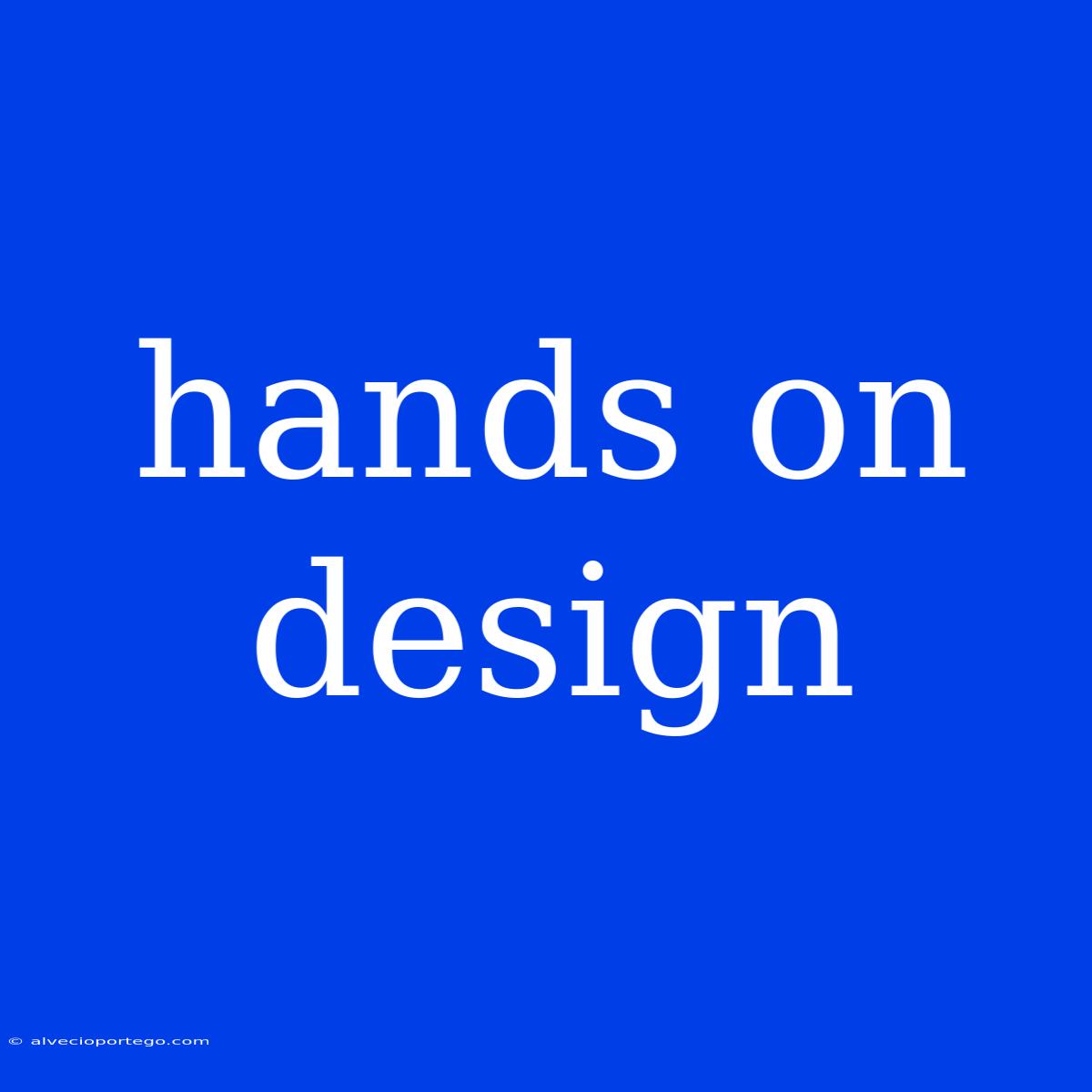Hands-on Design: A Practical Approach to Creativity
Hands-on design is a process of creating and iterating on ideas through direct physical interaction with materials and tools. It emphasizes experimentation, prototyping, and learning by doing. This approach goes beyond traditional computer-aided design (CAD) by placing a premium on tangible experiences and the iterative nature of the design process.
Why Hands-on Design Matters:
1. Fosters Creativity and Innovation: Direct interaction with materials allows designers to explore unconventional solutions and push the boundaries of their imagination. It encourages experimentation and the discovery of unexpected outcomes.
2. Enhances Understanding: Building prototypes and manipulating materials provides a deeper understanding of the design's functionality, usability, and limitations. This knowledge informs future iterations and improves the overall design.
3. Facilitates Collaboration: Hands-on design activities encourage collaboration among team members. Working together on physical prototypes fosters communication and shared understanding, leading to more effective design solutions.
4. Improves Problem-Solving: The iterative nature of hands-on design encourages problem-solving through experimentation and testing. Designers can quickly identify flaws, refine their designs, and arrive at optimal solutions.
5. Promotes Communication: Physical prototypes serve as a powerful communication tool. They allow designers to effectively communicate their ideas to stakeholders, clients, and users, leading to clearer understanding and alignment.
Practical Applications of Hands-on Design:
Hands-on design is applicable across a wide range of disciplines, including:
- Product Design: Prototyping new products with various materials and testing their functionality, ergonomics, and user experience.
- Industrial Design: Creating physical models of products to understand their form, function, and aesthetics.
- Architecture: Building scale models of buildings to visualize the spatial relationships and optimize design decisions.
- Graphic Design: Creating mockups and physical prototypes of logos, branding elements, and interactive experiences.
- Fashion Design: Working with fabrics and patterns to create physical garments and experiment with different styles and constructions.
Tools and Techniques for Hands-on Design:
- 3D Printing: Rapid prototyping and creating complex geometries.
- Laser Cutting: Precision cutting of materials for precise prototypes and models.
- Sketching and Modeling: Creating quick sketches and conceptual models to capture ideas and explore form.
- Digital Fabrication: Utilizing digital tools like CNC machines and 3D printers for precise fabrication.
- Traditional Craft Techniques: Exploring traditional craft techniques like woodworking, metalworking, and ceramics to gain deeper understanding of materials and processes.
Embracing Hands-on Design:
Integrating hands-on design into your design process can be a transformative experience. It encourages a more creative, iterative, and collaborative approach to problem-solving. By getting your hands dirty, you can unlock a world of possibilities and discover innovative design solutions.

